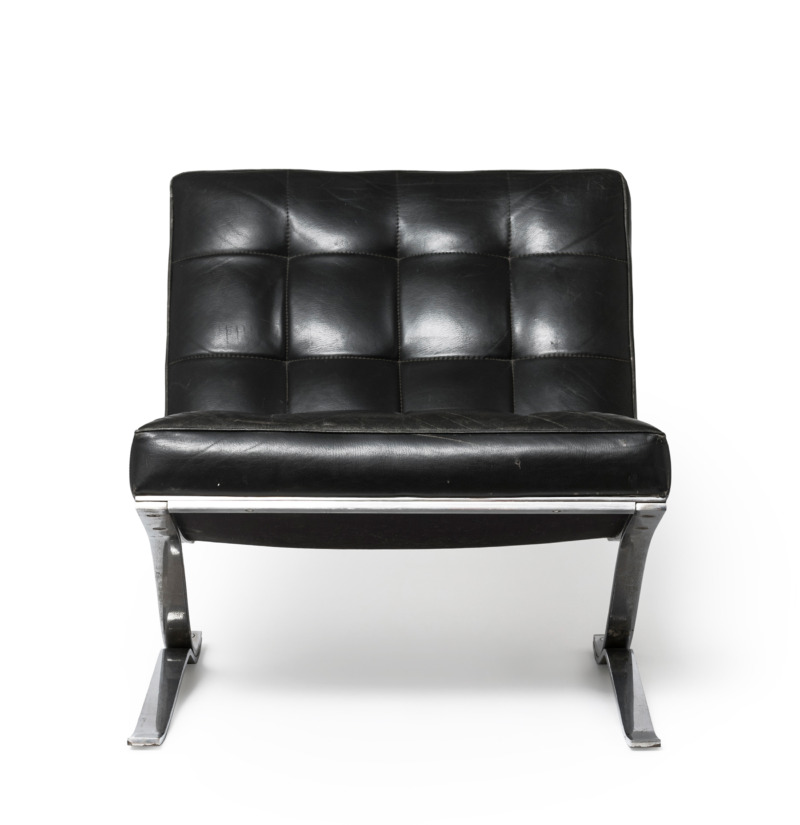This model of a cantilever chair from 1929/1930 – a style icon of classical modernism – was designed by Marcel Breuer.
The architect and designer Breuer, who studied at the Bauhaus in Weimar, was head of the furniture workshop at the Bauhaus in Dessau from 1925 and in this context also developed tubular steel furniture. The basis for his cantilever chair was a design by the Dutch architect Mart Stam, who had been a guest lecturer at the Bauhaus and had constructed the prototype of the first chair without rear legs from gas pipes in Rotterdam in 1926. In 1927, Stam then presented two black lacquered versions of this “Kragstuhl” (from “kragen” = to protrude) as part of the furnishing of a terraced house he designed in the Weißenhofsiedlung in Stuttgart.
The “B 64″/”S64”, initially assigned to Breuer, is a clear enhancement of Stam’s first models, in which he had still used plywood panels as seats. The chromed tubular steel is complemented by bentwood frames made of beech for the seat and backrest, which are covered with Viennese wickerwork.
The double designation of this cantilever chair indicates the patent dispute that Breuer and Stam had in court. For the first time ever, in this legal dispute the issue of artistic copyright was dealt with in relation to an object of everyday use. Stam won the dispute: he was awarded the patent in 1932 and is considered the inventor of the cantilever chair since then. The Thonet company, which had secured the rights to this chair, among others, thereupon renamed it “S 64”. To this day, however, the company sells the chair as a design by Breuer and notes that the intellectual copyright lies with Stam.
Stam’s cantilever chairs can be seen in our current exhibition “the early years” and the “B 64″/”S 64” is part of our permanent exhibition.

